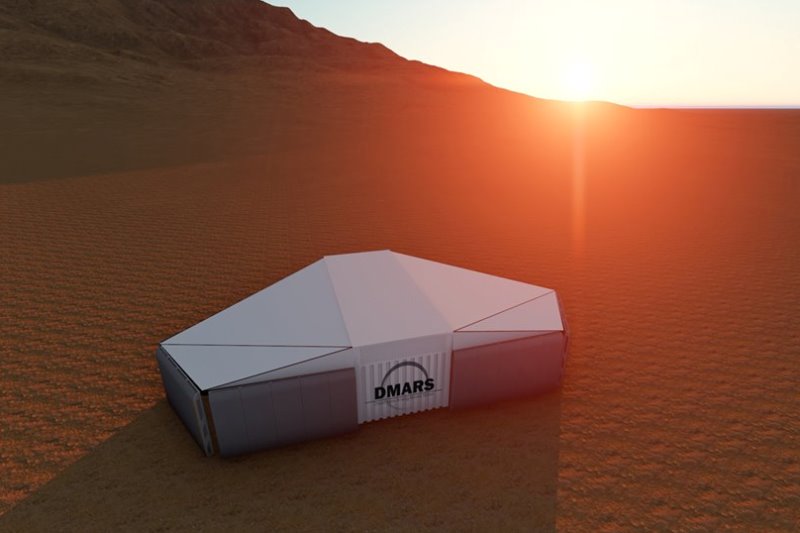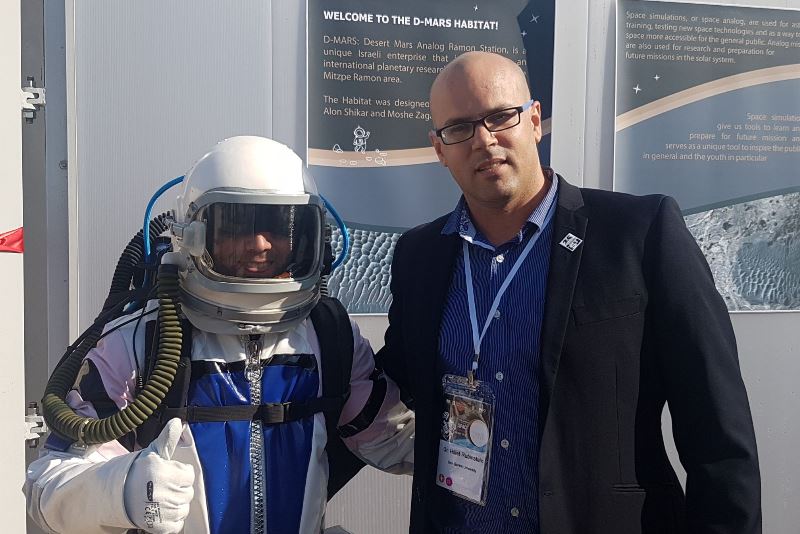The first facility in Israel that simulates a Mars habitat will be constructed later this month (February) south of Mitzpe Ramon in the Negev desert. The D-Mars project manager is Dr. Hillel Rubinstein , a post-doctoral fellow at Ben-Gurion University of the Negev, supervised by Vice-President and Dean for R&D, Prof. Dan Blumberg.
The D-Mars project is a unique Israeli initiative to develop an international space analog center for planetary research in an isolated desert area close to Mitzpe Ramon, chosen for its similarities to Mars in terms of geology, aridity, and isolation.

The environment provides a combination of analog elements for space simulations, difficult to find elsewhere in the world. "The temperature on the surface of Mars ranges from 35 degrees to minus 140 degrees while gravity and atmospheric conditions are a third of what they are on Earth," explains Dr. Rubinstein "It is impossible to exist unsupported on Mars; it's easy to hop from place to place and radiation exposure is high. Any astronauts who eventually reach Mars will need to move around the surface of the planet wearing a suit with full life support systems to perform research in the field, something that requires a suit that allows easy movement and fine motor skills."

The structure is known as the Habitat and is part of a course at the Technion – Israel Institute of Technology's Faculty of Architecture about the design and construction of space environments for students of aeronautics, mechanical engineering, architecture, computer science and more. The Habitat is expected to accommodate approximately 6-8 astronauts whose goal is to perform imaging tasks for several days to weeks and will actually constitute the cornerstone of a future imaging facility. The Habitat was unveiled during Israel Space Week.
Space simulations are a developing field in the space industry and are used for training future astronauts and to make the field of space exploration accessible to the public. Simulation allows experiments to be performed in a similar environment and comparable conditions. The uniqueness of the D-Mars Habitat is that it uses the desert environment without harming it. The various simulations to be performed at the facility simulate space missions to Mars, where astronauts will wear space suits upon exit and the daily routine, food and communications will follow the same structure as that of a real assignment.
The D-Mars team has several goals: launching the first analog assignment in Israel on February 15-18 2018, in cooperation with the Austrian Space Forum, an international body that includes over 20 countries and specializes in analog missions. Following this mission, in April of this year, the final project of the "Young Astronaut Training School" will be held in the Habitat. The 18-month long program is conducted at the Davidson Institute of the Weizmann Institute of Science and financed by the Israel Space Agency and the ICA Foundation, with the aim of studying core topics and acquiring tools for space exploration.
There are a small number of similar centers in the world, and the D-MARS project will put Israel at the forefront of space exploration. Furthermore, the Israeli center is unique in the sense that it is accessible to many diverse users.
Media Coverage
The Times of Israel
Reuters
Israel21C